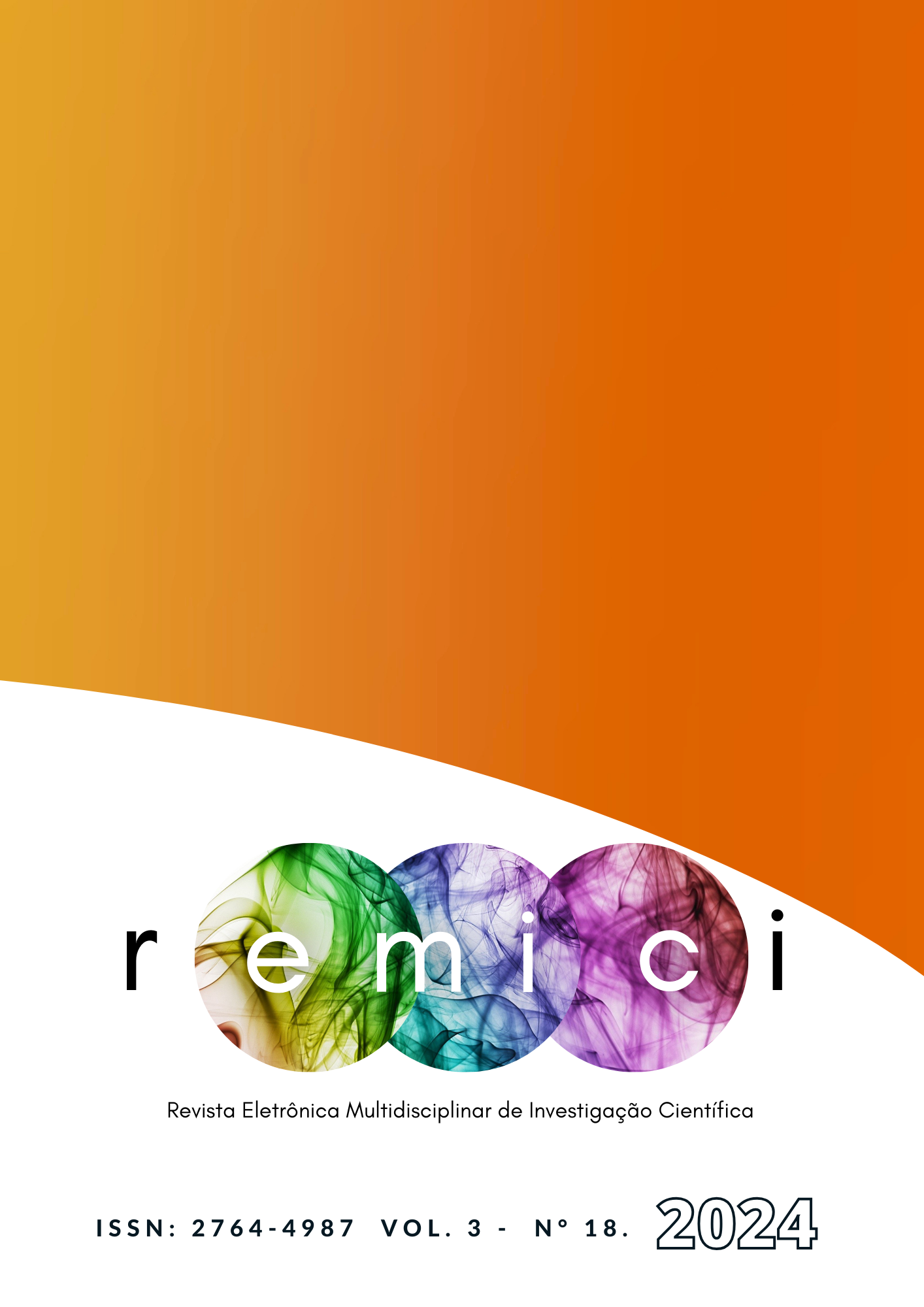ACESSIBILIDADE EM RESIDÊNCIAS: ADAPTAÇÕES NECESSÁRIAS SOB A ÓTICA DOS USUÁRIOS DE CADEIRA DE RODAS
Main Article Content
Abstract
Accessibility is a basic condition for people with disabilities to have safety and autonomy. In homes, this accessibility should be considered more objectively, aiming at adaptability and usability in the event of a possible disability. Thus, the present study aims to verify, based on the perception of wheelchair users, the needs for modifications and adaptations carried out in their homes, in order to make them accessible. The research is characterized as applied, of a descriptive observational nature, with analysis and discussion of data under a qualitative paradigm. Semi-structured interviews were carried out via video calls with each participant, due to the COVID-19 pandemic, in May 2020. Eight wheelchair users selected for convenience and regulars at the Association of Spinal Cord Injured People of Rio Grande do Sul (LEME/RS) participated in the study. It was found that everyone made some type of adaptation to their homes, some simple, such as installing ramps and support bars, to others that were elaborate and costly, such as installing elevators. The adjustments most cited spontaneously by participants were made in the bathroom and kitchen. It is clear that some of the adaptations carried out do not follow the precepts of comfort and safety of use recommended in the minimum dimensions contained in NBR 9050:2020, the most common being the inclination of ramps, door dimensions and equipment heights outside the established standard. Even if legislation does not require it, building adapted or adaptable homes at a low cost reduces the worry if misfortune unexpectedly strikes a family. Adapting homes can be simple or complex or even impossible, depending on the construction type and numerous technical factors, however, with construction designed for accessibility, the difficulties will be much less and the adaptations will be more economical.
Article Details

This work is licensed under a Creative Commons Attribution-NonCommercial-ShareAlike 4.0 International License.
References
ASSOCIAÇÃO BRASILEIRA DE NORMAS TÉCNICAS (ABNT). NBR 9050: Acessibilidade a edificações, mobiliário, espaços e equipamentos urbanos. Rio de Janeiro. 2013. Disponível em: https://www.caurn.gov.br/wp-content/uploads/2020/08/ABNT-NBR-9050-15-Acessibilidade-emen-da-1_-03-08-2020.pdf. Acessado em: Maio. 2024.
ASSOCIAÇÃO BRASILEIRA DE NORMAS TÉCNICAS (ABNT). NBR 15.575: Edificações habitacionais. Desempenho. Parte 1: Requisitos gerais. Rio de Janeiro. 2013.
BRASIL. Lei no. 13.146, de 06 de julho de 2015. Institui a Lei Brasileira de Inclusão da Pessoa com Deficiência (Estatuto da Pessoa com Deficiência). Disponível em: http://www.planal-to.gov.br/ccivil_03/_ato2015-2018/2015/lei/l13146.htm. Acessado em: Maio. 2024.
BRASIL. Decreto no. 9.451, de 26 de julho de 2018. Regulamenta o art. 58 da Lei nº 13.146, de 6 de julho de 2015, que institui a Lei Brasileira de Inclusão da Pessoa com Deficiência - Estatuto da Pessoa com Deficiência. Disponível em: https://www.planalto.gov.br/ccivil_03/_ato2015-2018/20-18/decreto/d9451.htm. Acessado em: Maio. 2024.
CARLI, S. P. Moradias inclusivas no mercado habitacional brasileiro. In: ORNSTEIN, S. W.; ALMEIDA PRADO, A. R.; LOPES, M. E. (Orgs.). Desenho universal: caminhos da acessibilidade no Brasil. São Paulo: Annablume, 2010. p. 131-142.
CASTRO. J. C. Ir e Vir – acessibilidade, compromisso de cada um. Campo Grande: Gráfica Gibim e Editora, 2013.128 p.
FURLANETTO, C. H. P. Condições de acessibilidade em habitação de interesse social: estudo de caso em condomínio PAR em Passo Fundo. 2013. 151 f. Dissertação (Mestrado em Engenharia) – Universidade de Passo Fundo, Passo Fundo, 2013. Disponível em: http://tede.upf.br/jspui/bitstream/tede/303/1/2013ClaudiaHelenaPaimFurlanetto.pdf. Acessado em: Maio. 2024.
INSTITUTO BRASILEIRO DE GEOGRAFIA E ESTATÍSTICA (IBGE). (2022a). PNAD Contínua: Pessoas com Deficiência 2022. Disponível em: https://biblioteca.ibge.gov.br/visu-alizacao/livros/liv102013_informativo.pdf. Acessado em: Maio. 2024.
INSTITUTO BRASILEIRO DE GEOGRAFIA E ESTATÍSTICA (IBGE). (2022b). Censo Demográfico 2022. Disponível em: https://censo2022.ibge.gov.br/panorama/. Acessado em: Jun. 2024.
JORDAN, W. A. Universal Design for the Home: barrier-free living for all generations. Singapura: Quary Books, 2008. 207 p.
KANG, Y. et al. Epidemiology of worldwide spinal cord injury: a literature review. Journal of Neurorestoratology, v. 6, p. 1-9, 2018. Disponível em: https://doi.org/10.2147/JN.S143236. Acessado em: Maio. 2024.
LANSLEY, P.; McCREADIE, C.; TINKER, A. Can adapting the homes of older people and providing assistive technology pay its way? Age and Ageing. v. 33, n. 6, p 571-576, 2004. Disponível em: https://doi.org/10.1093/ageing/afh190. Acessado em: Jun. 2024.
MARCONDES, N. A. V.; BRISOLA, E. M. A. Análise por triangulação de métodos: um referencial para pesquisas qualitativas. Revista Univap, v. 20, n. 35, 2014. Disponível em: https://doi.org/10.18066/revunivap.v20i35.228. Acessado em: Jun. 2024.
MINAYO, M. C. S. et al. Métodos, técnicas e relações em triangulação. In: MINAYO, M. C. S.; ASSIS, S. G. E.; SOUZA, R. (Eds.). Avaliação por triangulação de métodos: abordagem de programas sociais. (1a. reimp.). Rio de Janeiro: FIOCRUZ, 2005.
PRODANOV, C. C.; FREITAS, E. C. Metodologia do trabalho científico: métodos e técnicas da pesquisa e do trabalho acadêmico. 2. ed. Novo Hamburgo, RS: Feevale, 2013.
ROJAS, V. B. F. Contribuições para o planejamento de ambientes construídos destinados à convivência de idosos. 2005. 147 f. Trabalho de Conclusão (Mestrado Profissionalizante em Engenharia) – Universidade Federal do Rio Grande do Sul. Porto Alegre. 2005. Disponível em: https://lume.ufrgs.br/handle/10183/10145. Acessado em: Jun. 2024.
SODRÉ, E. S. R.; RAPOSO, M.; BRAIDA, F. Acessibilidade no ambiente residencial: um estudo de caso em um conjunto habitacional para população de média e baixa rendas em Juiz de Fora. Anais do 15º ERGODESIGN, v. 2, n. 1, 2015. Disponível em: https://pdf.blucher.com.br/designproce-edings/15ergodesign/67-E142.pdf. Acessado em: Jun. 2024.
STORY, M. F.; MUELLER, J. L.; MACE, R. L. The Universal Design File: Designing for People of All Ages and Abilities. NC State University, The Center for Universal Design. 1998. 172p.
TEIXEIRA, L. C.; MEDOLA, F. O.; PASCHORELLI, L. C. A pessoa com mobilidade reduzida no ambiente domiciliar: demandas para o Design Universal e tecnologia Assistiva. Anais do 15º ERGODESIGN. 2015. Disponível em: https://www.researchgate.net/publication/281492546_A_PE-SSOA_COM_MOBILIDADE_REDUZIDA_NO_AMBIENTE_DOMICILIAR_DEMANDAS_PARA_O_DESIGN_UNIVERSAL_E_TECNOLOGIA_ASSISTIVA. Acessado em: Jun. 2024.
THIRY-CHERQUES, H. R. Saturação em pesquisa qualitativa: estimativa empírica de dimensionamento. Revista PMKT, n. 3, p. 20-27, 2009. Disponível em: https://revistapmkt.com.br/wp-content/uploads/2009/09/SATURACAO_EM_PESQUISA_QUALI-TATIVA_ESTIMATIVA_EMPIRICA_DE_DIMENSIONAMENTO.pdf. Acessado em: Jun. 2024.
VAN DEN BERG, M. E. et al. Incidence of spinal cord injury worldwide: a systematic review. Neuroepidemiology, v. 34, n. 3, p. 184-192, 2010. Disponível em: https://doi.org/10.1159/0-00279335. Acessado em: Jun. 2024.

